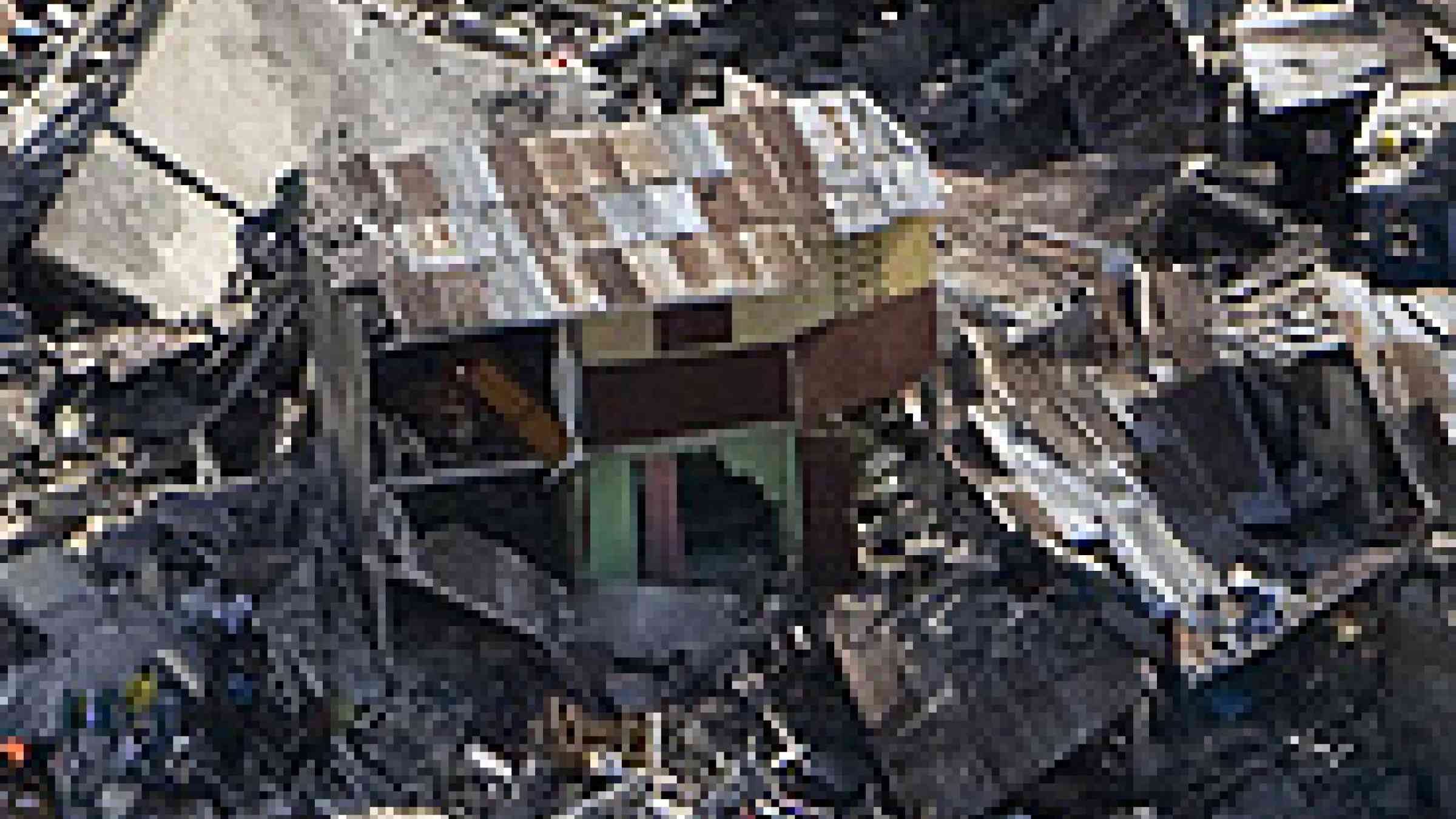Please help us improve PreventionWeb by taking this brief survey. Your input will allow us to better serve the needs of the DRR community.
Haiti damage and needs assessment: World Bank partners with global network of scientists and experts

Photo copyright UNDP
The World Bank, supported by the Global Facility for Disaster Reduction and Recovery (GFDRR), announced today that it has mobilized scientists and technical experts around the world to help assess the impacts of the earthquake in Haiti. The initiative, called Operation GEO-CAN – which stands for Global Earth Observation – Catastrophe Assessment Network, will estimate and classify building damage based on high resolution aerial imagery in areas severely affected by the earthquake, including Port-au-Prince.
The initiative to create this network came from ImageCat, a leading provider of advanced technologies for risk and disaster management headquartered in Long Beach, California, and its partners – Rochester Institute of Technology, the Earthquake Engineering Research Institute (EERI), and other institutions. The World Bank and GEO-CAN are working in a joint mission to collect, process, and analyze very high resolution optical, thermal infra-red, topographic images allowing detailed visualization of houses, public buildings, cars, vegetation, and even people. Imagery and data from other collectors in this global effort, such as Google and the National Oceanic and Atmospheric Administration (NOAA), is also being analyzed.
According to Saroj K. Jha, Manager and Head of GFDRR, “the information gathered will be essential for the GFDRR-sponsored Post-Disaster Needs Assessment that will be carried out by the Government of Haiti with support from the World Bank, the United Nations, the Inter-American Development Bank, the European Union, and other development partners.”
At present, up to 103 organizations, including universities, governmental and non-governmental entities and private sector companies, have joined the GEO-CAN community. Contributors come from 20 countries, including the United States, Austria, Barbados, Canada, China, Costa Rica, Finland, Japan, India, Iran, Italy, Mexico, Netherlands, Poland, Portugal, Turkey, United Kingdom, Germany, Spain, and Sudan.
“The Earthquake Engineering Research Institute’s professional membership is uniquely qualified to partner with the World Bank and ImageCat in the effort to characterize building condition, particularly building collapse, through analysis of aerial photography,” said Jay Berger, EERI's Executive Director. “The overwhelming response to our call for EERI volunteers is not unexpected, as these earthquake professionals have a passion for seismic safety and they are jumping at the opportunity to assist the relief effort in Haiti.”
The World Bank’s response in Haiti builds on the knowledge gained supporting the reconstruction efforts after the earthquake in Sichuan, China, and the tsunami in Indonesia, where, at the request of the government, the Bank set up and managed the Multi-Donor Trust Fund that helped rebuild Aceh and Nias. In the case of Haiti, the Bank’s intervention will focus on infrastructure, reconstruction, and rehabilitation, taking advantage of the opportunity to build better not only physical infrastructure but also institutional capacity.
When the earthquake hit, disaster risk reduction was becoming a key priority in Haiti’s development programs and the island had been benefitting from a three-year National Program for Vulnerability Reduction to Natural Hazards supported by GFDRR. The World Bank’s ongoing support for Haiti’s disaster risk management program has also included a US$20 million Emergency Bridge Reconstruction and Vulnerability Reduction Project, approved in 2008, which rebuilt major bridges after the deadly 2008 hurricane season. The World Bank and GFDRR have also provided technical assistance to further strengthen Haiti’s disaster management system.
About the World Bank Program in Haiti
The World Bank is a close partner of Haiti. There are 15 active World Bank projects in Haiti focusing on areas including disaster risk management, infrastructure, community-driven development, education, and economic governance. All current World Bank assistance to Haiti is in grant form.
Since January 2005, the International Development Association has provided a total of US$308 million to the Caribbean nation. In addition, trust funds administered by the World Bank have given more than US$55 million since 2003. These amounts do not include the US$100 million in grants announced on January 13, 2010.
-#-
Explore further
Please note: Content is displayed as last posted by a PreventionWeb community member or editor. The views expressed therein are not necessarily those of UNDRR, PreventionWeb, or its sponsors. See our terms of use
Is this page useful?
Yes No Report an issue on this pageThank you. If you have 2 minutes, we would benefit from additional feedback (link opens in a new window).